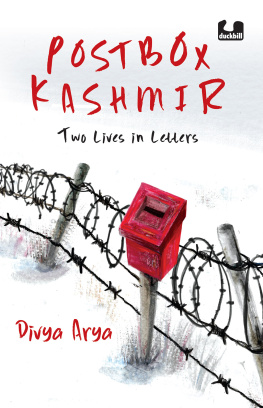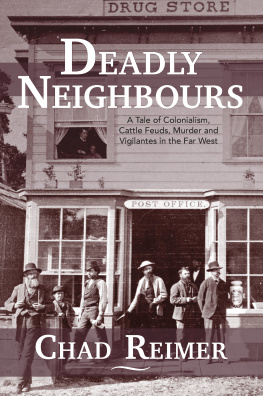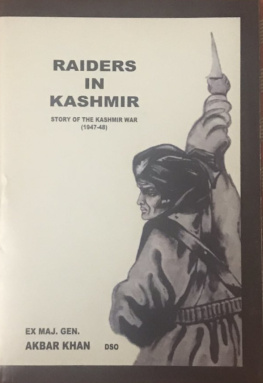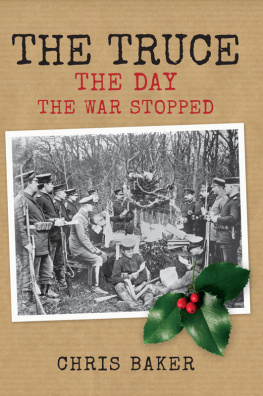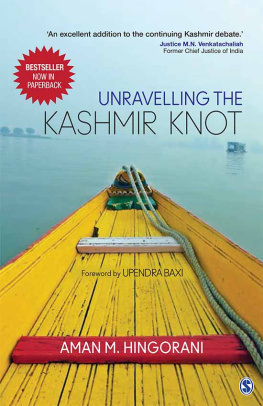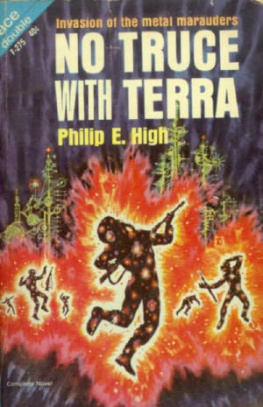KASHMIR AND NEIGHBOURS
Dedicated to
W. W. Kulski
My professor of International Relations at the
Maxwell Graduate School of Citizenship and Public Affairs,
Syracuse University, New York, U.S.A.,
To whom the students of the 1950s owe so much
Kashmir and Neighbours
Tale, Terror, Truce
TRKKAYA ATAV
First published 2001 by Ashgate Publishing
Reissued 2018 by Routledge
2 Park Square, Milton Park, Abingdon, Oxon OX14 4RN
711 Third Avenue, New York, NY 10017, USA
Routledge is an imprint of the Taylor & Francis Group, an informa business
Copyright Trkkaya Atav 2001
Trkkaya Atav has asserted his moral right under the Copyright, Designs and Patents Act, 1988, to be identified as the author of this work.
All rights reserved. No part of this book may be reprinted or reproduced or utilised in any form or by any electronic, mechanical, or other means, now known or hereafter invented, including photocopying and recording, or in any information storage or retrieval system, without permission in writing from the publishers.
Notice:
Product or corporate names may be trademarks or registered trademarks, and are used only for identification and explanation without intent to infringe.
Publishers Note
The publisher has gone to great lengths to ensure the quality of this reprint but points out that some imperfections in the original copies may be apparent.
Disclaimer
The publisher has made every effort to trace copyright holders and welcomes correspondence from those they have been unable to contact.
A Library of Congress record exists under LC control number: 2001091323
ISBN 13: 978-1-138-72450-1 (hbk)
ISBN 13: 978-1-315-19264-2 (ebk)
The Essence
Come, come again, whoever, whatever you may be, come;
Heathen, fire-worshiper, sinner of idolatry, come;
Come even if you have broken your vows a hundred times,
Ours is not the portal of despair or misery, come.
Maulana Jalal-ud Din Rumi (120773), tr. Talt S. Halman
I beseech my Hindu brothers to rise to the height of their
traditional tolerance which is the basic glory of our Vedic faith.
I.N.C. President, Sarojani Naidu, 1925
[I]n course of time, Hindus would cease to be Hindus, and
Muslims would cease to be Muslims, not in the religious sense,
because that is the personal faith of each individual, but in the
political sense as citizens of the State.
Quaid-e Azam Muhammad Ali Jinnah, 1947
Contents
I started taking notes for this book after observing Indian soldiers in Srinagar, Kashmir s summer capital, gazing through the gun-slits of their sand-bagged bunkers. They were trying to coexist with the states natural beauty, its greatest resource. The panorama from Hotel Welcome, where I stayed, was a glimpse of so much more to delight in. But the bunkers draped in camouflage netting and dotting street corners were also contrasting sights of more to come.
A multi-religious political entity based on Kashmiriyat, a common culture shared by the countrys Muslims, Hindus, Sikhs, and even Buddhists, gave way to a bloody wedge between various groups of these communities. Insurgencies, kept up by foreign entities, attracted mercenaries who apparently needed a job and a mission. Attacks on Hindus, most of whom were Brahmins belonging to the Pandit caste, and Muslims, both of whom lived, by and large, as bhai-bhai (like brothers) for generations, not only relocated virtually the entire Hindu population of the Valley (equally called Vale) of Kashmir, but also made insufficiently supportive Muslims targets. This dangerous episode presented itself in constitutionally secular India whose founding father, Jawaharlal Nehru, was a Kashmiri Pandit himself and where Sufi (mystical) Islam as an undogmatic faith with components from sources outside Muslim teaching, moved closer to Hinduism.
Although Article 370 of the Constitution of India recognizes the special position of the State of Jammu and Kashmir (J&K), the latter is a part of India. Hence, the word neighbours in the title of the book refers mainly to Pakistan and the export of mercenaries from another neighbour Afghanistan. J&K faces a dilemma. After the grassroots violence, that emerged in 1988, and with Pakistan throwing its lot in with it, terrorism discouraged tourism, on which the states economy substantially depended, and economic stagnation pushed the unemployed youth towards guerilla activity that pays dividends in more ways than one. The armed rebels are now motivated less by Kashmiri nationalism than fundamentalism, partially sponsored by neighbouring Pakistani groups and Afghanistans Taliban and other imported aliens, most of whom are strangers to that land and its peoples. Some called them guests, who would be more accurately defined as uninvited intruders. More depressingly, during the Summer of 1999, the forces of India and Pakistan, both now possessing a nuclear capability, clashed at Kargil, giving chills to all those who fear the future may be decided by an atomic contest. India may be acclaimed favourably for self-restraint after rebuffing Pakistans incursion.
Blood-soaked episodes compel me to probe the Kashmir issue, especially in the light of terrorism, not unmindful of the role played by the infamous Taliban-at-arms. Hoping for the triumph of eventual stability in J&K, this book finds it worthwhile, by way of comparison, to offer a description of the fascinating land, manifold people, far-reaching past, and the nation-building experiences of India and Pakistan, which seemingly march to different drummers. Since no issue can be addressed in isolation, the chapters below serve, in my opinion, the main purpose of this research, which is terrorism in J&K as it is the instrument of the foreign policy of the two north-western neighbours of India. There can be no understanding of the issue without some essential background of these closely interrelated factors. The present militants carried out violent actions, partly but consequentially assisted by the Pakistani intelligence services. The Afghan experience was momentous for this neighbouring country for providing it with an infrastructure of trained manpower, camps and weapons as much as a centre of indoctrination of Mujahideen (fighters) for Islamic jehad (literally struggle, holy war or ardent effort to spread Islam). This books sections on violence in the Seven Sisters of Indias North-East and in Punjab aim to evince the parallelism between all extremist activities in different parts of India.
There is no security either for India and Pakistan, both nuclear states now, or for the whole of the Sub-continent, without peace and stability in J&K. While the road to truce and reconciliation passes through bilateral talks and mutual accommodation, realistic and far-reaching enough to deserve the support of the Kashmiris, the success of the Central Government in New Delhi in regaining the loyalty of the Sikhs of Punjab raises hopes that the alienation in the Valley of Kashmir may well be a nightmare of the past. Just as Pakistans long-enduring vision that the Kashmiris wish to join their Islamic neighbour lacks sufficiently convincing basis, India needs to pursue policies of more human rights and more jobs, in addition to the need to crush terrorism.








